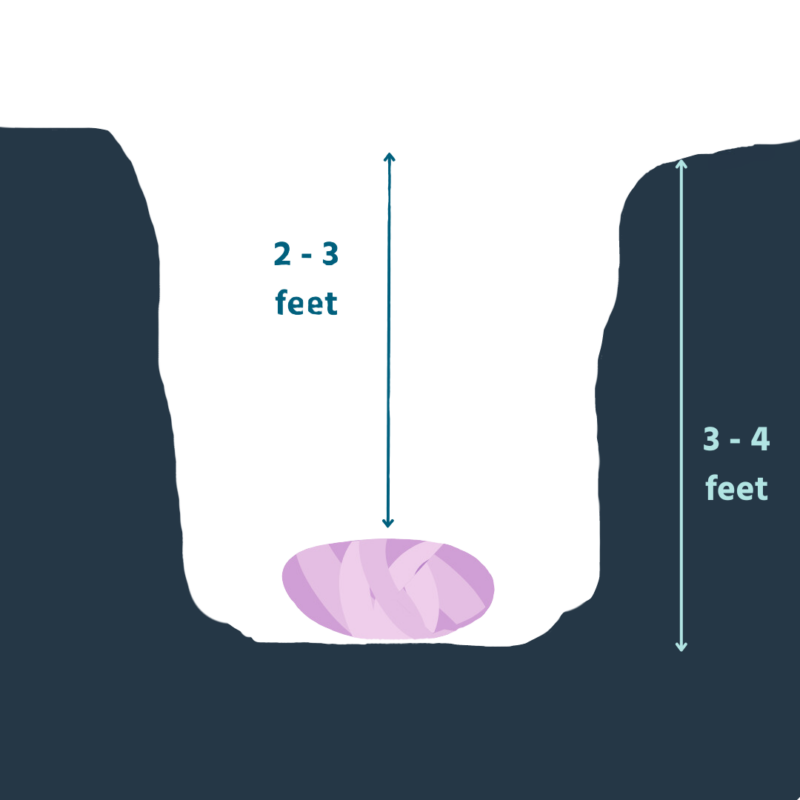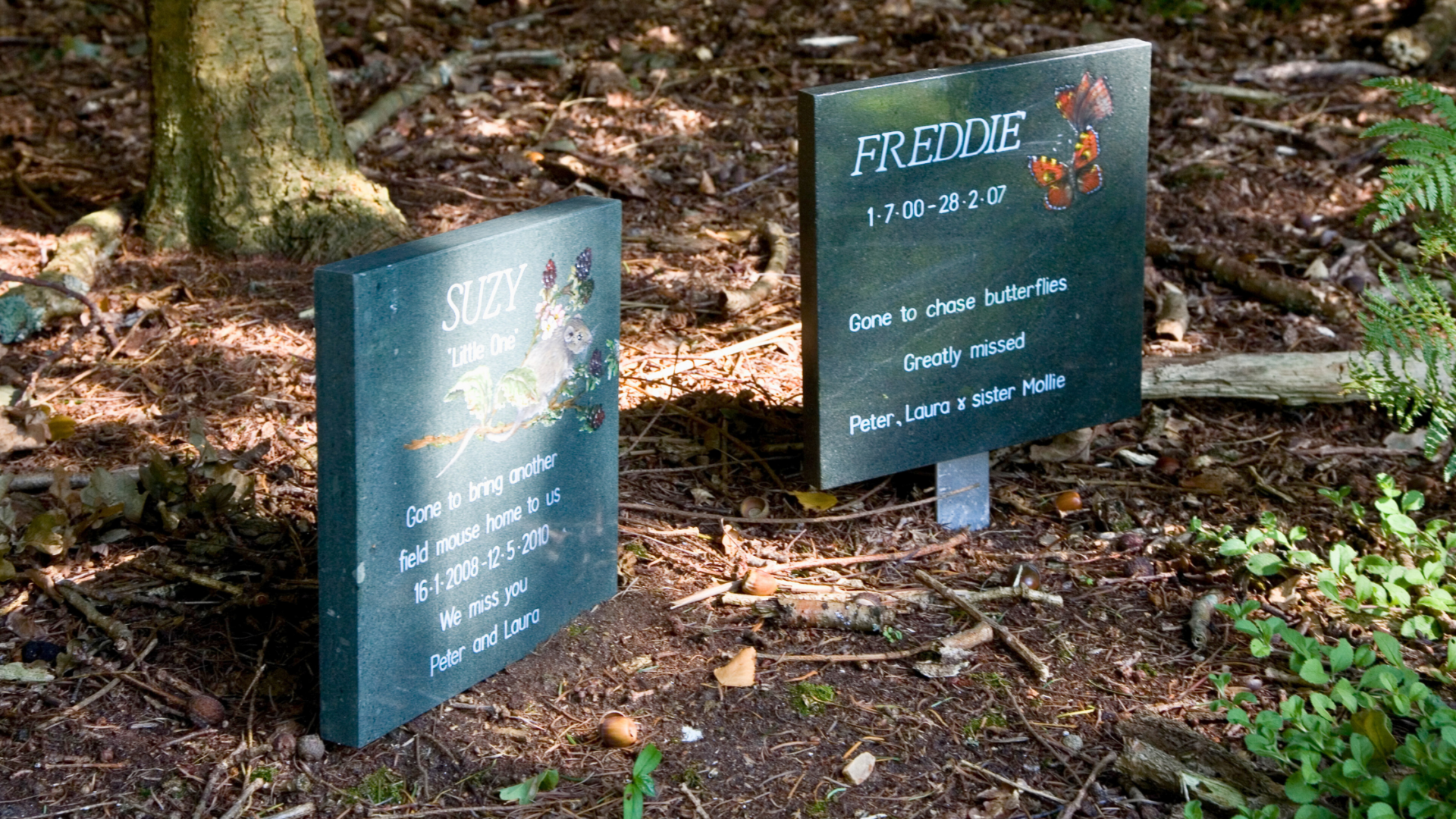Home pet burial can be a beautiful and personal way to lay your furry friend to rest. It allows you to create a final resting place in a familiar and loved environment. However, before making this decision, it’s important to consider your circumstances and long-term plans.
Before burying a pet in your garden, consider how you will feel if you move house?
If you wouldn’t want to leave them behind, consider whether another option like individual cremation might be a better choice in the long term. This way, you can take their ashes with you when you move to your next house. If you wish to find out more about our cremation process, head to Why We Carry Out Individual Pet Cremations.
If you would prefer to choose home burial, then here’s some advice to help you.
How To Dig A Pet’s Grave

Select the position of the grave carefully, it’s nice to pick an area of your garden that is pretty or that your pet enjoyed in thier lifetime. However, certian things need to be considered.
Choose a place that is unlikely to need to be exacavated in the future (so flower beds are often best avoided unless you plan to put a tree or memorial stone on top) and don’t put a grave in a place that gets boggy or is at risk of flooding. Also, keep the grave site far away from water sources such as wells, ponds, streams etc. Take care not to disrupt any underground pipes or cables.
To prepare your pets grave, measure your pet to get an idea of the size of grave you need to dig, width and length wise, the grave should be at least 3-4 feet deep. This is for health reasons and also to safeguard against scavengers, other pets from digging up the burial area, or even rain from washing away topsoil and uncovering the grave. Don’t forget a 3 foot deep grave allows for about 2 foot of soil to go back on top.
Proper Way To Bury A Pet
Your pet should be buried in something that is breathable and biodegradable like a towel, blanket, wicker, or cardboard coffin. Avoid making a casket out of anything plastic or that’s sealed in an air-tight way. Do not bury your pet in a plastic bag or anything else that is non-breathable and non-biodegradable. If you wrap your pet in a man made fabric, then it will take longer to biodegrade. A simple cotton towel will biodegrade much faster.
Once the grave is back filled, you could have a mound of earth that can either be piled on top or you can spread it over the surrounding area. You can let the whole family be part of the burial. Writing poems, saying a few words, letting children add letters, drawings and toys to the grave can all help. Finally, to mark your pets fnal resting place, you can plant a lovely bush or shrub and/or add a keepsake or pet memorial stone. It will also identify their exact location should you need to uplift them in the future.
For more information, head to Dogs Today to read Pet burials: what you should know.

Saying goodbye to a pet is never easy, and home burial can be a comforting and personal way to honour your cherished companion. By following these tips and carefully considering the long-term implications, you can create a respectful and lasting memorial for your beloved pet.
